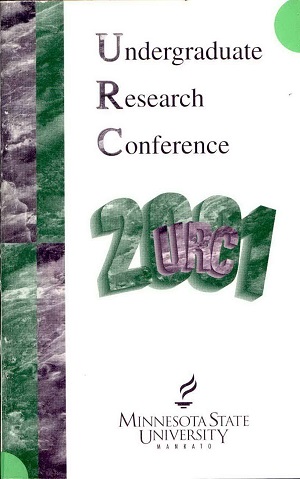Preliminary Assessment of Phosphate Contribution to Mills Lake, Minnesota, from Agricultural Tile Systems
Location
CSU
Student's College
Science, Engineering and Technology
Mentor's Name
Bryce Hoppie
Mentor's Department
Geography
Mentor's College
Social and Behavioral Sciences
Description
Phosphate levels in area lakes are a major problem. Excessive phosphate leads to eutrification and significant loss of water quality. This project addresses the issue of phosphate transport from field tile systems into area lakes. Are these systems significant sources of phosphate into area lakes? Over fifty samples were collected from the test site between the tile outlet and Mills Lake, Minnesota. Additional samples were taken from an area near the lake but away from the tile outlet. These samples were analyzed for total phosphate, percent of organic matter, and grain size. Preliminary results showed excess total phosphate in most surface samples between the tile outlet and the lake. Most samples exhibited coarse soil textures and possessed generally low organic matter content. Thus the phosphate may exist in mobile forms and may be moving through the field tile system into the lake.
Preliminary Assessment of Phosphate Contribution to Mills Lake, Minnesota, from Agricultural Tile Systems
CSU
Phosphate levels in area lakes are a major problem. Excessive phosphate leads to eutrification and significant loss of water quality. This project addresses the issue of phosphate transport from field tile systems into area lakes. Are these systems significant sources of phosphate into area lakes? Over fifty samples were collected from the test site between the tile outlet and Mills Lake, Minnesota. Additional samples were taken from an area near the lake but away from the tile outlet. These samples were analyzed for total phosphate, percent of organic matter, and grain size. Preliminary results showed excess total phosphate in most surface samples between the tile outlet and the lake. Most samples exhibited coarse soil textures and possessed generally low organic matter content. Thus the phosphate may exist in mobile forms and may be moving through the field tile system into the lake.



